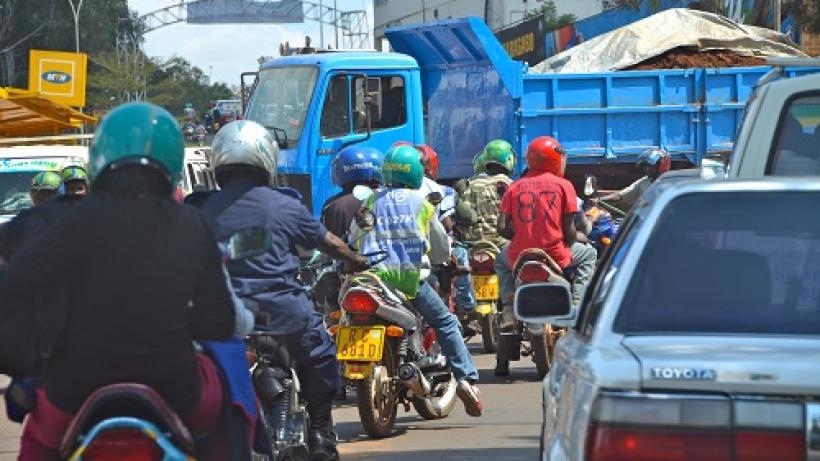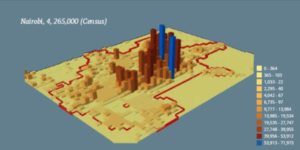
Driving urban development: An agenda for accessibility
On the 8th September 2017, the World Bank, George Washington University and the International Growth Centre hosted the 4th Urbanization and Poverty Reduction Research Conference: Building or Rebuilding Cities for Growth in Washington DC. The conference brought together top academics and practitioners to discuss the role sustainable cities play in economic growth and poverty reduction, and how to build, or rebuild, cities to realise this role. The focus of the conference was three-fold; land, transportation and public services. Below is a summary of the discussion from the session on transport networks, the key message being the need to move beyond a policy focus on mobility to consider options for improving urban accessibility more broadly.
Cities drive growth because of their ability to bring together firms and workers in a way that allows for scale and specialisation. With a large pool of connected individuals, people with a wide variety of skills can be matched to jobs that are most suited to them, and firms can specialise to meet the specific demands of consumers. But in many developed and developing cities, we are seeing rapid urbanisation without commensurate increases in productivity and liveability. A lack of necessary connectivity between citizens reveals an important role for policymakers to improve the mobility of citizens, and more broadly, the accessibility of their cities.
The importance of urban mobility
Transport networks, by improving people’s access to jobs and services, and companies’ access to input and output markets, are at the heart of making a successful city. However, in many developed and developing cities, lack of walkways, limited roads, crippling traffic jams and high costs of transport services restrict both the liveability and productivity of cities. For example, the World Bank’s Kenya Urbanisation Review (2016) estimates that sitting in traffic costs the city of Nairobi up to $USD 4 million per workday. At the same time, in several developing cities the existing forms of motorised transport are both unsustainable and unsafe. In Lagos, privately owned danfo minibuses are locally referred to as “flying coffins” because of their limited regulation, poor maintenance and frequent violation of traffic rules (UN-HABITAT, 2007).
In this context, coordinated transport policy plays a crucial role in improving people’s mobility across a city. Policies can aim to either increase the supply of public or private transport through additional investment, or regulate demand through price and quantity restrictions. In many cities, both types of policies are needed.
Expanding the supply: the role of infrastructure
Enhancing the supply of transportation services in a city includes building new infrastructure such as roads and railways, as well as investing in high capacity public transport. The majority of policy attention in developing cities has to date been on the former. Certainly, more roads play a crucial role in improving accessibility in cities. Across 7 major cities in Sub-Saharan Africa, only 16% of developed land between 1990 and 2014 was allocated to roads (Lamson-Hall et al., 2015). Initial results from a study of 154 Indian cities show that 70% of the variation in car travel speeds comes from differences in uncongested travel speed (Akbar et al., 2017). In the majority of cities, travel times can be reduced through investments in expanded and better organised road infrastructure.
However, evidence from US cities suggests a fundamental law of highway traffic, whereby as incomes and populations rise, people will drive more to match the additional roads built (Duranton and Turner, 2009). Hence, though expanding roads will allow additional people to move around a city, more is needed if policymakers want to solve a city’s long-term congestion problem. Public transport systems have the potential to improve mobility in a way that reduces congestion and can have a significant positive effect on reducing emissions (Gendron-Carrier et al., 2017).
Cost benefit analyses of public transport investments need to be conducted and supplemented with consideration of potential funding arrangements for these investments. Subway systems, for example, are expensive, and in many developing cities incomes are not high enough to credibly finance these despite their large potential benefits. In this context, evidence suggests that in many growing high-density cities, Bus Rapid Transit (BRT) systems offer the greatest potential for relatively low cost and high capacity mass public transport (Gomez-Ibanez et al., 2011).
From mobility to accessibility
Policies to improve mobility in cities are, however, only one piece of the puzzle. People’s access to job opportunities and urban services can also be expanded by increasing their proximity to each other. Akbar et al.’s findings (2017) highlight that proximity alone can explain up to 81% of the differences in accessibility across Indian cities. In a city like Bokaro (in Jharkhand, India), cars can travel high speeds, but accessibility is hampered by large distances between locations.
Current patterns of land intensive and fragmented ‘leapfrog’ urban growth in many developing cities increase average distances between people’s homes and jobs, limiting workers’ accessing job opportunities across a city. By preventing businesses from locating in certain areas, people have to travel long distances to access jobs. In Cape Town, a lack of central density in the city means that 86% of residents cannot affordably access marketplaces (Wainer et al., 2016).
 Fragmented development in Nairobi
Fragmented development in Nairobi
(Source: Lall, 2017)
The importance of proximity highlights a key role for urban land use policy to complement transport investments. In some cities, this will involve decentralisation of particular types of economic activity such as hairdressers and grocers into mixed use neighbourhoods that allow consumers easier access. In others, there is a need to intensify urban density, particularly for firms that offer employment opportunities in central urban areas and in surrounding residential areas. By relaxing unnecessarily stringent density regulations, policymakers can encourage more compact urban growth, and reduce high distances and costs of access for large numbers of citizens without having to expand means of mobility.
Improvements to urban mobility in many developing cities represent an overwhelming strain on existing resources. However, improvements to mobility are only one part of enhancing accessibility in cities. A broader view of the determinants of accessibility - uncongested mobility, congestion, and proximity – reveals a more realistic path for urban policy.
A full programme of the day, alongside relevant working papers for research presented can be found here.
References:
Akbar, Prottoy, Victor Couture, Gilles Duranton, Ejaz Ghani, and Adam Storeygard (2017), “Accessibility and Mobility in Urban India.”.
Duranton, Gilles, and Matthew A. Turner (2009), “The Fundamental Law of Road Congestion: Evidence from US Cities.” National Bureau of Economic Research
Accessible: http://www.nber.org/papers/w15376
Gendron-Carrier, Nicholas, Marco Gonzalez-Navarro, Stefano Polloni, and Matthew A. Turner (2017), “Subways and Urban Air Pollution,”
Accessible: http://www.brown.edu/Departments/Economics/Faculty/Matthew_Turner/papers/unpublished/GendronCarrier_etal_unp2017.pdf
Gomez-Ibanez, Jose A., William B. Tye, and Clifford Winston (2011), "Essays in Transportation Economics and Policy: A Handbook in Honor of John R. Meyer", Brookings Institution Press
Lall, Somik V. (2017), “Transport and Urban Development.”
Lamson-Hall, Patrick, David Degroot, Richard Martin, Tsigereda Tafesse, and Shlomo Angel (2015),. “A New Plan for African Cities: The Ethiopia Urban Expansion Initiative.” NYU Stern Urbanization Project
UN-HABITAT (20017), Enhancing Urban Safety and Security. Global Report on Human Settlements
Accessible: https://unhabitat.org/books/global-report-on-human-settlements-2007-enhancing-urban-safety-and-security/
Wainer, Laura Sara, Billy Ndengeingoma, and Sally Murray (2016), “Incremental Housing, and Other Design Principles for Low-Cost Housing.” The International Growth Centre
World Bank (2016), “Republic of Kenya: Kenya Urbanization Review”

